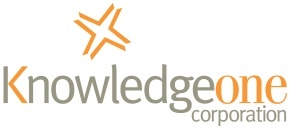For Windows NT/2000 Users:
RecFind for Windows (PC Systems) is supplied with 2 versions of the Btrieve DBMS. One version is for sites using Novell Netware which uses the Btrieve NLM and BRequest TSR. The other version supplied is "local Btrieve".
When using the Btrieve NLM version supplied with RecFind for Windows, the BRequest TSR must be loaded prior to running Windows. In Windows 3.x this was done using the AUTOEXEC.BAT file.
Windows 95 and Windows NT Workstation v4.0 do not contain the standard AUTOEXEC.BAT functionality. For Windows 95 workstations, the BRequest TSR may be loaded in the WINSTART.BAT however this functionality is not available in Windows NT Workstation v4.0.
Knowledgeone Corporation have contacted Btrieve for assistance with this matter. Their recommendation is for sites to upgrade to Btrieve v6.15 which offers a pure DLL version of BRequest, among other benefits. Instructions on using the Btrieve v6.15 pure DLL Windows Requesters are attached to this paper.
Knowledgeone Corporation have found however that modifying the SYSTEM32\AUTOEXEC.NT file does load the BRequest TSR when loading RecFind for Windows. Btrieve agreed that this can work however it does not function in all environments.
From Knowledgeone Corporation's testing, to use the AUTOEXEC.NT file, the Microsoft Netware Client provided with Microsoft Windows NT Workstation v4.0 must be used with NWLink IPX/SPX compatible transport protocol. If using this configuration, the BRequest TSR is loaded by performing the following:
Copy BREQUEST.EXE from the RecFind application directory to the workstation's C drive.
Modify the %SystemRoot%\system32\autoexec.nt file to contain the line:
[path]\brequest /d:2048
Reboot
Note: The NT 4.0 client must have the IPX/SPX compatible transport protocol loaded. NW16.EXE and VWIPXSPX.EXE must be loaded prior to loading BREQUEST.EXE. We recommend you load them from AUTOEXEC.NT. If the NWLink IPX/SPX compatible transport protocol is installed, these files are located in the %SystemRoot%\SYSTEM32 directory.
The AUTOEXEC.NT should then contain the following lines:
REM Install network redirector
Lh %SystemRoot%\system32\nw16
Lh %SystemRoot%\system32\vwipxspx
C:\brequest.exe /d:2048
Windows Requester For Btrieve V6.15
RecFind for Windows for PC Systems is supplied with 2 versions of the Btrieve DBMS. One version is for sites using Novell Netware which uses the Btrieve NLM and Brequest TSR. The other version supplied is "local Btrieve".
Btrieve for Novell Netware (NLM) version 6.15 supports the usage of a pure Windows DLL requester. This alleviates the need for BRequest to be loaded in the AUTOEXEC.BAT or WINSTART.BAT.
In order to utilize this requester, you must alter the DLLs used by RecFind for Windows. The following files are required: (Extract from Btrieve for Netware — Installation and Operation (v6.15) — page 4-11).
| Name |
Description |
Size (bytes) |
Version (date) |
WBTRCALL.DLL |
v6.15.4 or later — the Btrieve requester |
42,832 |
6.15.525 (16/6/95) |
WBTICOMM.DLL |
The communications requester |
7,996 |
1.10.1 (23/5/95) |
TLI_WIN.DLL |
Generic DLL that provides access to the SPC protocol stack used by WBTICOMM.DLL |
15,713 |
(8/6/94) |
TLI_SPX.DLL |
An SPX-specific DLL that also provides access to the SPX protocol stack. It also calls NWIPXSPX.DLL |
52,179 |
(8/6/94) |
NWIPXSPX.DLL |
Makes calls to the SPX drivers. |
30,016 |
(16/5/95) |
NWCALLS.DLL |
Novell client software used by WBTRCALL.DLL and WBTICOMM.DLL in a Netware environment. |
147,856 |
(14/2/96) |
NWLOCALE.DLL |
National language support DLL for the Netware 3 environment. |
38,576 |
(2/11/93) |
|
Note: Sizes and versions may vary. The above DLLs were those used during testing.
All of the above DLLs are provided with Novell Netware and Btrieve v6.15. It is suggested that all these DLLs are placed in the RecFind directory replacing any existing files (ie WBTRCALL.DLL).
Additional Notes:
- Troubleshooting: To ensure that the above DLLs are correctly loaded by the RecFind system when executed, the WPS.EXE program stored on Disk 1 of the RecFind for Windows installation diskettes can be used.
- Requester compatibility: The requester methods utilized by workstations throughout the network can not be mixed. All workstations accessing the RecFind system must use the same method (ie local, TSR or pure DLL) and the same library versions. Failure to do this may cause locking problems.
- Multiple requesters on a workstation: A workstation can not use two different requester methods, as the workstation only loads the WBTRCALL.DLL library once. The first application executed will load the appropriate requester, all subsequent applications using Btrieve will utilize that same requester. Due to this, a workstation can not access two different versions of the Btrieve NLM on different servers. All Btrieve NLMs will need to be v6.15 or higher.
- Btrieve for NT Server: There are compatibility issues with RecFind for Windows and Btrieve for NT Server. This environment is currently not supported by RecFind for Windows. The Australian distributor of Btrieve has indicated that if using Btrieve for NT Server v6.15 and Btrieve NLM v6.15 on a Novell Netware server, the same Requester will support both Btrieve types. This does mean however that the Btrieve on the Novell Netware server must be v6.15 or higher.
- User limit in Btrieve v6.15: Btrieve v6.15 NLM included the introduction of user licenses. When supplied ArcServe, Btrieve has a user license limit of 5 users. Additional user licenses for Btrieve are not supplied with the RecFind for Windows package and must be purchased separately from Btrieve. The BTRMON.NLM program supplied with Btrieve will enable you to view the number of licensed users for Btrieve.
Each workstation will require a BTI.INI file in the WINDOWS directory with the following settings:
[Btrieve]
local=no
Requester=yes
thunk=no
[Btrieve Requester]
datalength=2048
[Communications Requester]
TCP connect timeout=15
Supported protocols=SPX,TCPIP
The BTI.INI file will be created when the DLLs are used for the first time. By default the value for 'thunk' is set to 'yes'. This needs to be modified to say 'no' manually using Notepad or another ASCII text editor.
